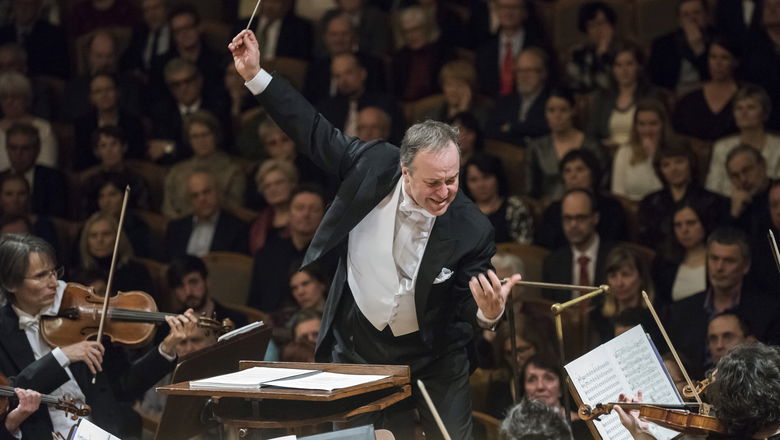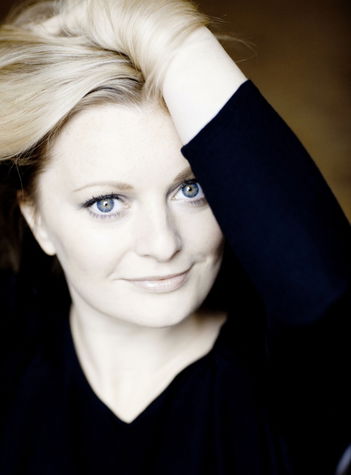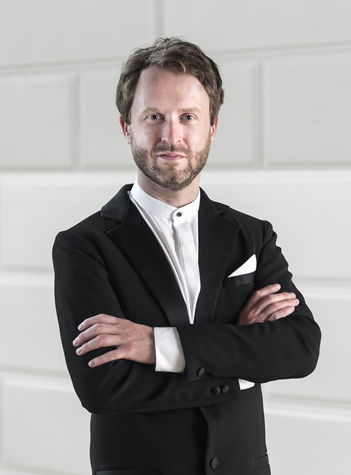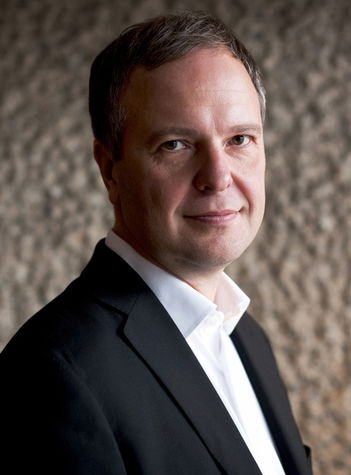1 / 6
Czech Philharmonic • Velvet Revolution Concert
The Velvet Revolution Concert resounds with spiritual strength and hope. In his Resurrection Symphony, Gustav Mahler traces a journey from the darkness of death towards faith in light and renewal. This monumental work, uniting emotion with philosophical depth, reflects the soul’s struggle for meaning and hope. The Czech Philharmonic and the Prague Philharmonic Choir will be conducted by the Finnish maestro Sakari Oramo, stepping in for Zubin Mehta.
Programme
Gustav Mahler
Symphony No. 2 in C minor “Resurrection” (80')
Performers
Lucy Crowe soprano
Okka von der Damerau mezzo-soprano
Prague Philharmonic Choir
Lukáš Vasilek choirmaster
Zubin Mehta conductor
Sakari Oramo conductor
Czech Philharmonic

Recommended Dress Code
In celebration of the national holiday, we kindly recommend the following dress code for both concerts: black tie (or a black suit with a white shirt and dark tie, and a long evening dress).
Customer Service of Czech Philharmonic
Tel.: +420 227 059 227
E-mail: info@czechphilharmonic.cz
Customer service is available on weekdays from 9.00 am to 6.00 pm.
The Czech Philharmonic and the Prague Philharmonic Choir have close ties to Mahler’s music. Together, they recorded the Second Symphony as part of a Mahler cycle being made under the baton of chief conductor Semyon Bychkov in cooperation with the recording label Pentatone.
“The Second Symphony, ‘Resurrection’, was inspired by the eternal question: ‘Why are we here?’ Its five movements show the cycle of life with all its struggles: suffering, joy, irony, humour, love, and doubts… All along, however, it is faith that brings final certainty,” says Bychkov, characterising the work.
Performers
Lucy Crowe soprano

Lucy Crowe has established herself as one of the leading lyric sopranos of her generation. She has sung with opera companies throughout the UK and Europe, including the Royal Opera, Covent Garden, the Glyndebourne Festival, English National Opera, the Deutsche Oper Berlin and the Bavarian State Opera. She made her US operatic debut as Iole (Handel’s Hercules) for Chicago Lyric Opera, reprising the role for the Canadian Opera Company, and she made her debut with the Metropolitan Opera, New York as Servilia (La clemenza di Tito), returning last season for Adele (Die Fledermaus).
On the concert platform she is much in demand with the world’s major orchestras and conductors and she has appeared at the Aldeburgh, Edinburgh, Salzburg and Tanglewood Festivals and at the Mostly Mozart Festival in New York.
Lucy’s 2016/2017 operatic plans include the title role in Rodelinda at the Teatro Real Madrid and Ismene (Mitridate) at the Royal Opera House. In concert she will appear with the Philadelphia Orchestra, on tour with the London Symphony Orchestra, the Boston Symphony Orchestra, and the Accademia Santa Cecilia Orchestra.
Okka von der Damerau mezzo-soprano
Prague Philharmonic Choir
The Prague Philharmonic Choir (PPC), founded in 1935 by the choirmaster Jan Kühn, is the oldest professional mixed choir in the Czech Republic. Their current choirmaster and artistic director is Lukáš Vasilek, and the second choirmaster is Lukáš Kozubík.
The choir has earned the highest acclaim in the oratorio and cantata repertoire, performing with the world’s most famous orchestras. In this country, they collaborate regularly with the Czech Philharmonic and the Prague Philharmonia. They also perform opera as the choir-in-residence of the opera festival in Bregenz, Austria.
Programmes focusing mainly on difficult, lesser-known works of the choral repertoire. For voice students, they are organising the Academy of Choral Singing, and for young children there is a cycle of educational concerts.
The choir has been honoured with the 2018 Classic Prague Award and the 2022 Antonín Dvořák Prize.
Lukáš Vasilek choirmaster

Lukáš Vasilek studied conducting and musicology. Since 2007, he has been the chief choirmaster of the Prague Philharmonic Choir (PPC). Most of his artistic work with the choir consists of rehearsing and performing the a cappella repertoire and preparing the choir to perform in large-scale cantatas, oratorios, and operatic projects, during which he collaborates with world-famous conductors and orchestras (such as the Berlin Philharmonic, the Czech Philharmonic, the Israel Philharmonic, and the Saint Petersburg Philharmonic).
Besides leading the PPC, he also engages in other artistic activities, especially in collaboration with the vocal ensemble Martinů Voices, which he founded in 2010. As a conductor or choirmaster, his name appears on a large number of recordings that the PPC have made for important international labels (Decca Classics, Supraphon); in recent years, he has been devoting himself systematically to the recording of Bohuslav Martinů’s choral music. His recordings have received extraordinary acclaim abroad and have earned honours including awards from the prestigious journals Gramophone, BBC Music Magazine, and Diapason.
Sakari Oramo conductor

“Oramo really gets under the skin of this music, and the audience showered him with warm appreciation. I can feel National Treasure status beckoning already.” – Ivan Hewett, The Telegraph
Winner of the 2015 Royal Philharmonic Society Conductor of the Year award, Sakari Oramo is Chief Conductor of both the BBC Symphony and the Royal Stockholm Philharmonic orchestras, and Principal Conductor of the West Coast Kokkola Opera and Ostrobothnian Chamber Orchestra. Between 1998 and 2008 he was Music Director of the City of Birmingham Symphony Orchestra, and after a decade as chief conductor of the Finnish Radio Symphony Orchestra, he has now served as their Honorary Conductor since 2012.
Highlights of the 2016/2017 season include numerous concerts with the BBC Symphony Orchestra, with whom he champions the promotion of new and rarely performed works – this season he conducts the world premiere of Michael Zev Gordon’s Violin Concerto and the UK premiere of Detlev Glanert’s Megaris, as well as Schmitt’s Anthony and Cleopatra joined by actors from Shakespeare’s Globe, and an immersion day into the life and work of French-American composer Edgar Varèse. Further highlights include touring the Baltics with Royal Stockholm Philharmonic Orchestra and Janine Jansen, and concerts with Boston Philharmonic and Wiener Philharmoniker.
Previous seasons’ highlights have included performances with the New York Philharmonic, a European tour with the Royal Stockholm Philharmonic Orchestra and Lisa Batiashvili, a Sibelius cycle with the Chamber Orchestra of Europe at the Turku Festival as well as concerts with the Finnish Radio Symphony Orchestra, NDR Elbphilharmonie Orchester, the Accademia Nazionale di Santa Cecilia, Wiener Philharmoniker and Deutsches Symphonie-Orchester Berlin. During the summer of 2016 he also conducted several Proms performances with the BBC Symphony Orchestra, including the First and Last Nights at the Royal Albert Hall, having previously conducted the Last Night in 2014.
An accomplished violinist, Oramo was originally concertmaster of the Finnish Radio Symphony Orchestra. In 2014 he made his debut in the BBC Proms Chamber Music series, performing Prokofiev’s Sonata for Two Violins with Janine Jansen.
Recent recording successes include the BBC Music Magazine’s Orchestra award for his recording of Nielsen Symphonies Nos. 1 & 3 with the Royal Stockholm Philharmonic, which completes their highly acclaimed Nielsen cycle. Other highlights include Grieg’s Piano Concerto with the BBC Symphony Orchestra and Javier Perianes and Nørgård’s Symphonies Nos. 1 & 8 with Wiener Philharmoniker.
Compositions
Gustav Mahler
Symfonie č. 2 c moll „Vzkříšení“
At the end of June 1894 during a stay at Attersee, a lake in Upper Austria, Gustav Mahler (1860–1911) wrote to his friend Fritz Löhr, a philosopher and archaeologist in Vienna: “I hereby report the happy birth of a healthy, strong final movement for my second symphony. The father and the child are doing well given the circumstances, but the latter still is not yet entirely out of danger.” He had begun writing his Symphony No. 2 in 1888, immediately after finishing his First Symphony (although he reworked the First Symphony several times later on; the final version was premiered in 1896). He had just become the Kapellmeister of the German opera company in Budapest, and the problems with the theatre’s management and the doubts that constantly accompanied Mahler’s creative process led to a delay. He did not return to the work in progress until three years later, when he took his position at the Municipal Theatre in Hamburg. By that time, he had sketched out the first movement, which he gave the title Totenfeier (Funeral Rites). He played it at the piano for the pianist and conductor Hans von Bülow, who admired Mahler’s artistry as a conductor and had enthusiastically welcomed his arrival in Hamburg. However, Bülow showed little comprehension of Mahler as a composer, and now his doubts were further deepened. At the time, Mahler confided to Fritz Löhr that Bülow “was seized by a nervous terror and declared that Tristan is a Haydn symphony compared to my composition. [...] I’m starting to believe it myself: either my things are a lot of confused nonsense, or—fill it in yourself! It is tiring me out...” Once again, he put the symphony aside, but probably not because of Bülov’s criticism; once again he had to devote most of his time and energy to work at the opera and to conducting concerts. After a rather long interruption, in the summer of 1893 he composed the songs Des Antonius von Padua Fischpredigt (Saint Anthony Preaches to the Fish) and Urlicht (Primal Light) from the collection Des Knaben Wunderhorn (The Youth’s Magic Horn), and both found a place in the symphony. Hans von Bülow died on 12 February 1894 in Cairo, where he had gone for treatment. And it was he who now—posthumously—helped Mahler find the key to the last movement. Mahler was present at Bülow’s funeral at St Michael’s Church in Hamburg, and he recorded his feelings: “The atmosphere in which I had been sitting there thinking about the departed corresponded to the spirit of the work I was carrying within myself. Then the choir, accompanied by an organ, began singing Klopstock’s Resurrection! It struck me like lightning, and it suddenly all became clear in my mind! A creative artist waits for just such a flash, something like a ‘holy annunciation’ to him!” After initial hesitation, being worried that he would be seen as an imitator of Beethoven, he dared to use choir in the final movement.
The first movement of the symphony (the movement’s title Totenfeier had not yet appeared in a printed edition) is a funeral march in sonata form. It opens with a deep string tremolo, then the winds join in, and the heroic main them gradually emerges. Another theme, solemn in character, also appears in a fugue in the finale, framing the whole composition. The second movement is in the character of a slow Ländler. A transformation of rondo form, it is meant to be a remembrance of “a joyous moment in the life of the dear departed one”. In the third movement, Mahler employed musical material from Des Antonius von Padua Fischpredigt (Saint Anthony Preaches to the Fish), and the song Urlicht (Primal Light) is sung by the alto soloist as the fourth movement, which follows without a pause. According to the composer, the song was to express “the struggle of a soul and questioning of God and of divine existence following life on earth”. For the fifth movement, which also follows attacca, Mahler adapted verses by Friedrich Gottlieb Klopstock (1724–1803). He characterised the finale as follows: “The end of every living thing has come, the last judgment is at hand...”. Yet what prevails over the image of the apocalypse is the image of God’s love, which “illuminates us with blessed knowledge and being”. In the finale of his Second Symphony, Mahler employs spatial effects with offstage French horns, trumpets, and timpani. For the concluding instrumental effect, he sought bells with the specific sound he imagined. He found them at a bell foundry in a village near Hamburg.
The Second Symphony was first performed under Mahler’s baton on 4 March 1895 in Berlin, but without the vocal movements. The critics called the fragmentary performance inappropriate because the public was entitled to get to know the work as a whole. This opinion documents a shift from the days of Beethoven in how symphonic works had come to be viewed as coherent structural wholes. That, however, did not make Mahler’s music easier to understand: “Mr Mahler introduced himself as a composer and a conductor. Although he does not really please the eye as a conductor, he conducts far better than he composes.” Reviewers complained that the work lacked form and accused Mahler of a fondness for dissonances that grate on the ears and of tortuous modulations. There was even a suggestion that he would do better to refrain from writing symphonies.
The premiere of the complete work took place that same year on 13 December, again in Berlin, and again with the composer conducting. Singing the soprano part was Josephine von Artner, a soloist with the Hamburg Opera who came from Prague; Mahler had met her while working in Leipzig. The performer of the alto part was the 21-year-old singer Hedwig Felden, also a native of Bohemia (born in Teplice), who had made her debut in Hamburg a year earlier under Mahler’s baton. Once again, some reviewers wrote that the composer lacked the first, most basic prerequisite for a symphonist: mastery of form. However, the critics received the vocal component with comprehension, calling the concluding chorus “the best part of the whole work”, which “definitely represents a impressive, conciliatory conclusion after a symphony lasting an hour and a half”. The conductor Bruno Walter later declared that “from that day, Mahler’s ascent began.”
Oskar Nedbal led the Czech Philharmonic in the Prague premiere of Mahler’s Second Symphony on 18 December 1903. The orchestra was augmented by players from the orchestra of the New German Theatre, joined by the choirs of the Prague vocal music society Hlahol and of Vinohrady Hlahol. The soloists were Božena Durasová (1886–1961, later known for performing in operettas) and Gabriela Horváthová (1877–1967). A critic described the symphony as a work “of profound spiritual depth, which, through the courage of its conception, the grandeur of its ideas, and often the astonishing power of its expression, both shakes and uplifts the listener. There are few musical poems in which the number of instrumental and vocal means is calculated so little for mere effect; here, everything is artistically justified and organically necessary.”